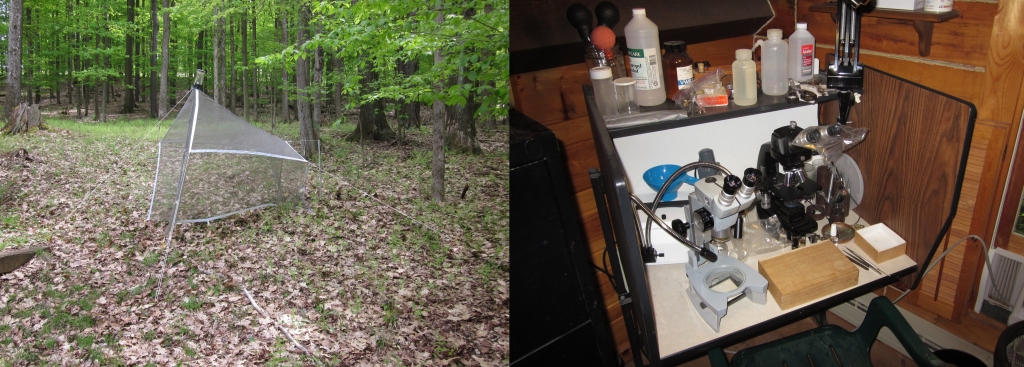Updated Broken Links
August 26, 2023I finally got around to updating the many broken links on these pages. Chief among them were the links to photos of type specimens at the Museum of Comparative Zoology (MCZ). Not only had the main URL changed, but the unique numbers had changed as well, and for some even what kind of type they represented. I also updated the links to other web pages about robber flies. Most of the old web page links were out of date.
This is probably a good place to mention the publication of an excellent additional resource for Laphriini from northeastern North America, namely, the Laphria (Diptera: Asilidae) of Ontario, with a key to the eastern Canadian species of Laphriini and Dasylechia, by Kate G. Lindsay and Stephen A. Marshall, published on the Canadian Journal of Arthropod Indentification website. As might be expected given the co-author it contains an excellent photographic key to species. I particularly want to mention that the depiction of the modifications of the sixth and seventh abdominal segments in the males of one of the groups I identified as a separate genus in my dissertation was done admirably using photographs--something I had thought would be nearly impossible.
I have only one criticism, and that is, in Figure 3 what is labelled as the "hypandrium" and "shelf of hypandrium" are actually the basistylus and the shelf of the basistylus, as you can see in the drawing and photograph, here and here, respectively. Unfortunately in subsequent references to the male terminalia throughout the paper this mistake is repeated again and again, when the basistyli are referenced. This would be an easy mistake to make, and was initially made by Snodgrass (1902), in his paper on the inverted hypopygium of Dasyllis and Laphria (where he labels the basistylus as "IXs," presumably for "ninth sternite"). Reichardt (1929), in his paper "Untersuchungen über den Genitalapparat der Asiliden" labels the same sclerite "v9," presumably for "ventral segment 9." Both are just other terms for the hypandrium. The proper interpretation of what was what, was worked out by Karl (1959), in his well-illustrated paper "Vergleichend-morphologische Untersuchungen der mannlichen Kopulationsorgane bei Asiliden." Unfortunately the latter is not available on-line. A rough manuscript translation of this lengthly publication was one of the primary documents I used when I began working on my disseration; polishing that up (I took German) and making it readable did more for my understanding of the evolution of asilid terminalia than anything else could have. In Laphriini, and even in primitive Laphriines like Dasylechia (see here), the hypandrium is vestigal or lacking, and the basistyli are fused medially. In Dasylechia the hypandrium is vestigal. You can see it clearly as the small trapezoidal sclerite in the center of thr bottom figure, between the basistyli, which are fused just posterior to it. Compare this to Fig, 3A from my dissertation of the male terminalia of what is currently termed Laphria sericea: the arrangement is very similar to that of Dasylechia, and all that is left of the hypandrium is the small area surrounding what looks like an "=" sign, bounded on each side by the basisytli, anteriorly by membrane, and posteriorly by the fused bases of the former. In the Dasylechia drawing an alternate terminology is used--the basistylus and dististylus are labelled as the gonocoxite and gonostylus (together known as the gonopod). The two sets of terms refer to the same structures. Using this latter terminology, Hull (1962) also followed Karl's interpretation: stating on Page 322 in Volume 1 of his "Robber Flies of the World" about the males of Laphria: "The gonopod is conspicuous, often with lobes or prongs and the hypandrium is very short or absent, the genital cavity open [my emphasis]." I should also take much of the responsibility for this oversight: I was asked to help by the authors and for various reasons never got back to them.


 Digg
Digg
 Facebook
Facebook
 StumbleUpon
StumbleUpon
 LinkedIn
LinkedIn
 Twitter
Twitter
 Email
Email